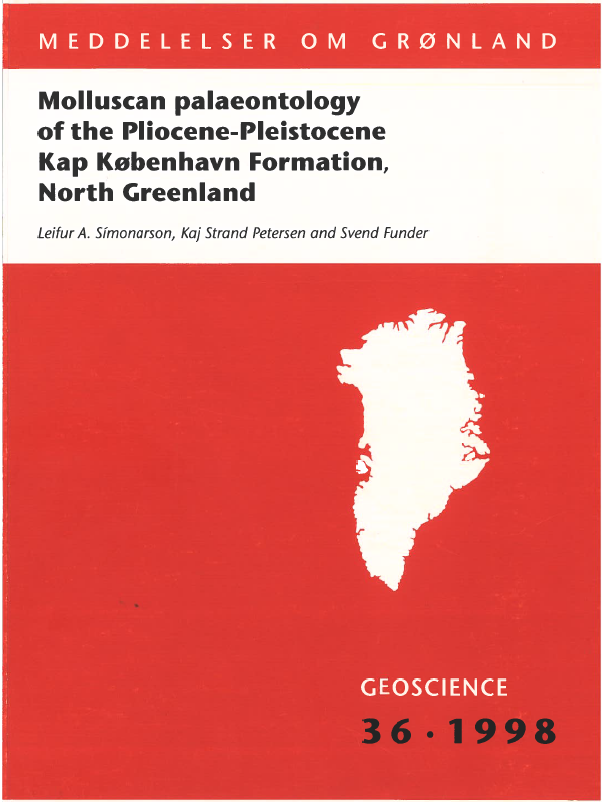Molluscan palaeontology of the Pliocene-Pleistocene Kap København Formation, North Greenland
DOI:
https://doi.org/10.7146/moggeosci.v36i.140966Abstract
The sediments of the Pliocene-Pleistocene Kap København Formation reflect a succession from isostatic conditioned regression (Member A) to transgression (Member B). Transgression rates were first slow (unit B1), then faster (unit B2), and then again slower (unit B3). The fragmented molluscan death assemblage of Member A reflects moderately deep water and arctic temperatures. Unit B1 was deposited mainly in foreshore, backshore, and shoreface environments, and the mollusc fauna was most probably washed up from slightly greater depths. Temperatures had now risen to subarctic. In unit B2 the mollusc fauna is a death assemblage of the parautochthonous type. Temperatures had risen to even milder subarctic conditions with higher sea temperatures. Unit B3 contains a fragmented low diverse molluscan death assemblage from an estuarine environment and with no temperature indication. However, all the faunas lived in waters with reduced salinity.
The 15 gastropod, 27 bivalve, and one brachiopod species from the Kap København Formation are amphiatlantic in character, but five species are new to the Greenland fossil fauna and four species are not known to live in Greenland today. All species are extant, but ten have not been found in older deposits and apparently have their FAD - their first appearance datums - in the Kap København Formation.
The mollusc fauna m the Kap København Formation is considered to be the oldest arctic fauna from marine, shallow water environments known so far. Biostratigraphical correlations indicate that the boundary between Member A and Member B is close to 2.45 Ma, i.e. the transition between the Praetiglian and Tiglian in northern Europe. This dates the formation to the uppermost Pliocene (allochthonous fauna assemblage) and the lowermost Pleistocene (Members A and B). It is suggested that the fauna evolved in response to the new and harsher environments following the Praetiglian glaciation, most probably during migration into shallow water environments. When the Polar Basin became ice covered the molluscs were attracted to the ice margin where food conditions were more favourable, and then to the shallow water shelves with seasonally ice free areas dose to the coasts.
Grab-samples with contemporary benthic fauna featuring 21 molluscan species from the fjord off Kap København are described.

Downloads
Published
How to Cite
Issue
Section
License
Coypyright by the authors and the Commision for Scientific Research in Greenland / Danish Polar Center. No parts of the publications may be reproduced in any form without the written permission by the copyright owners.

